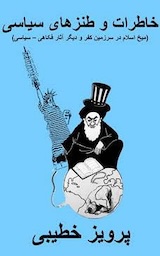Link
MajidNaficy 's Recent Links
The New Yorker: The Tragedy and Farce of Luka Dončić’s Trade
MajidNaficy | 9 hours ago
0 26
The New Yorker: We Might Have to “Shut Down the Country”
MajidNaficy | 9 hours ago
0 28
The New Yorker: The Enemy Within
MajidNaficy | 9 hours ago
0 24
China: Why Is Xi's Meeting With Ma, Entrepreneurs Important?
Viroon | 6 hours ago
0 35
Category: None
European leaders meet for crisis summit on Ukraine war | BBC News
Viroon | 6 hours ago
0 36
Category: None










Comments